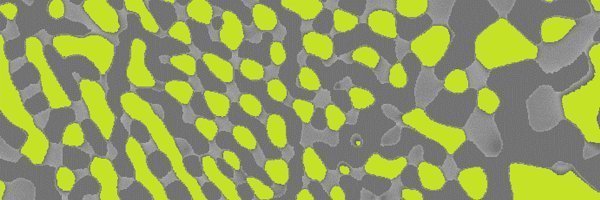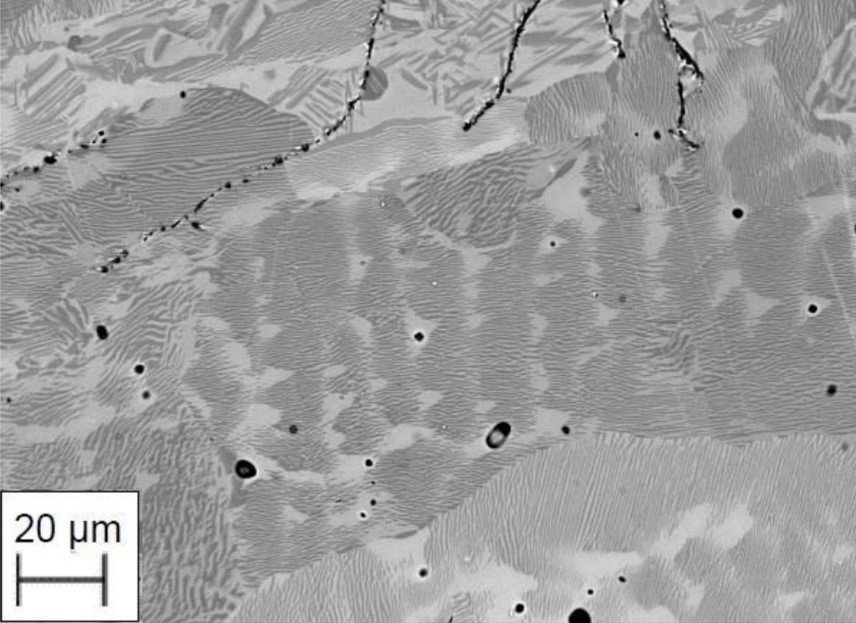
The effect of Mo and Nb additions on microstructure, thermal stability and mechanical properties of Al-rich Ti-Al
TiAl-based alloys currently mature into application. Sufficient strength at high temperatures and ductility at ambient temperatures are crucial issues for these novel light-weight materials. By generation of two-phase lamellar TiAl + Ti3Al microstructures, these issues can be successfully solved. Because oxidation resistance at high temperatures is still a problem which could be improved by increasing the Al content, Al-rich TiAl alloys have recently come into focus.
It has been shown that also in these alloys lamellar microstructures can be generated by which mechanical properties may improve. In addition, these alloys have even lower densities (approx. 3.2 g/cm3) than TiAl + Ti3Al alloys (approx. 4.0 g/cm3). The formation of the lamellar microstructures however is a complex process involving the occurrence of metastable phases such as Ti3Al5 and h-TiAl2. While these processes are well known for the binary system Ti-Al, there is no information on the effect of ternary alloying additions. In the current project, the effect of Mo and Nb additions on the microstructure evolution, thermal stability and mechanical properties is studied in a collaboration between the Department of Physical Metallurgy and Materials Testing, Montanuniversität Leoben, Austria and the Intermetallic Materials group at the MPIE.

Fig. 1: Lamellar g-TiAl + r-TiAl2 microstructure in a Ti-60Al-1Mo (at.%) alloy after 200 h heat treatment at 1000 °C and quenching to room temperature.












